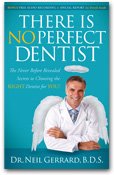Conventional orthodontic treatment
This refers to orthodontic treatment which is performed to correct a dental irregularity such as malocclusion (bad bite), overcrowded teeth or a jaw disorder such as TMJ.
These and other orthodontic problems are treated with braces. The most common type of brace used is the standard metal and wire brace which is also known as a fixed ‘tram track’ brace.
The idea behind a brace is to reposition teeth which have moved out of place; are crooked or protruding; have unsightly gaps between them or are crowding out other teeth.
But the most common orthodontic condition is malocclusion.
Causes of malocclusion
There are several causes of a bad bite which include:
- Protruding teeth due to thumb sucking or pacifier sucking
- Too many or not enough teeth
- Small mouth
- Misaligned jaw, e.g. TMJ
A bad bite caused by thumb/finger sucking is a common problem in children. This is a habit they develop, usually when very young which needs to be corrected sooner rather than later to prevent the need for a brace later on in life.
A bad bite is a common orthodontic problem in children. The most common orthodontic problems in adults include overcrowded teeth and crooked or deformed teeth.
Benefits of orthodontic treatment
Orthodontic treatment for children is discussed separately in the braces for children section.
Adults can benefit from wearing a brace which corrects any misalignment, improves the appearance of the teeth and acts as a boost to one’s confidence and self-esteem.
Many people assume that orthodontic treatment such as a brace is only for children but there are recognisable benefits for adults as well.
Other types of orthodontic treatment
Braces are the most popular form of treatment but there are others which are prescribed depending upon the nature of the condition. These include aligners (e.g. Inman Aligners), customised space maintainers and computer generated devices.
Aligners
The aligners are a transparent type of device which is similar in appearance to a brace. They are worn every two weekly before being replaced with another aligner. They gently move the teeth into the desired position over a period of time.
Customised space maintainers
These are personalised devices which are used to treat missing teeth, particularly in young children who still have their milk (baby) teeth.
They are inserted into the spaces where teeth are missing to help support the remaining teeth and structure of the jaw. This also prevents the other teeth from shifting over into the gap left by the missing milk tooth which can lead to overcrowding when the new tooth appears.
Computer generated devices
This refers to specialist orthodontic devices which have been fabricated via computer imagery. But these are more expensive than many other devices such as braces.
Duration of orthodontic correction
The length of time you wear an orthodontic device depends upon the extent of the problem and available treatment. Plus your dentist/orthodontist will recommend suitable forms of treatment such as a particular type of brace.
Most braces are worn for a period of 1 to 3 years apart from the fast acting braces which are effective in a matter of months. This is then followed by wearing a retainer which helps to keep your newly positioned teeth in place.
A retainer is usually worn for up to a year following the wearing of a brace but there are cases where it has to be worn on a permanent basis.
Dental
Information Guide
- Cosmetic
- Porcelain veneers
- Direct composite veneers
- Cosmetic crowns
- Cosmetic bridges
- Cosmetic fillings
- Direct composite bonding
- Cosmetic orthodontics
- General dentistry
- Dental Fear
- Dental implants
- Endodontic root treatments
- Orthodontics
- Invisible braces
- Fast Acting Braces
- Cosmetic braces
- Conventional orthodontic treatment
- Braces for children
- Tooth decay
- Dental hygiene
- Toothpastes and mouthwash
- Toothbrushing
- Flossing
- Interproximal brushing
- Dental treatment abroad
- Resolving problems
Cosmetic
General dentistry
Dental Fear
Dental implants
Endodontic root treatments
Orthodontics
Tooth decay
Dental hygiene
Latest news
-
Lorem ipsum dolor amet
13 OCT 2010Mauris eros sapien, mollis et varius vitae, mollis id augue...
-
Lorem ipsum dolor amet
13 OCT 2010Mauris eros sapien, mollis et varius vitae, mollis id augue...
-
Lorem ipsum dolor amet
13 OCT 2010Mauris eros sapien, mollis et varius vitae, mollis id augue...
the charity Smile Train
in conjunction with
There is No Perfect Dentist
 Buy The Book
Buy The Book
 Download a
Download a Listen to a
Listen to a  View our
View our